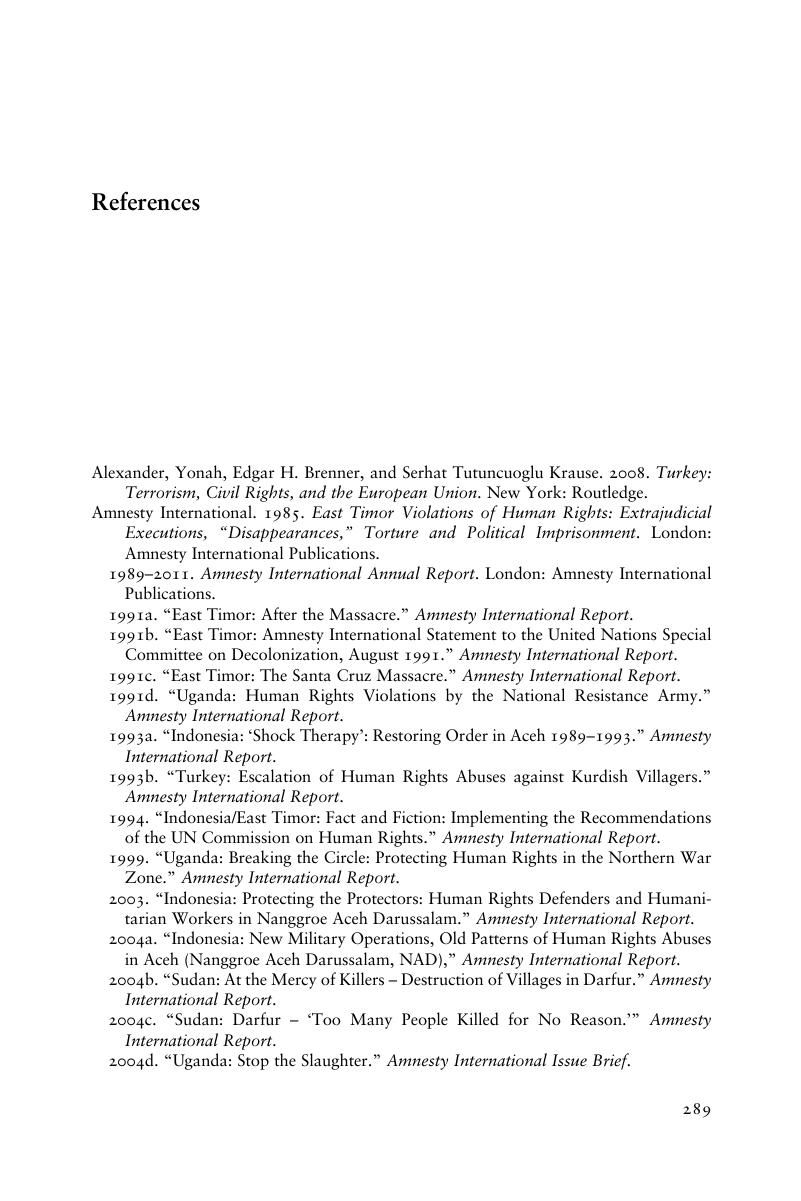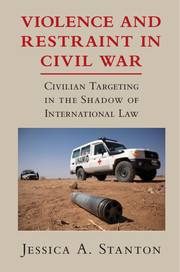Book contents
- Violence and Restraint in Civil War
- Violence and Restraint in Civil War
- Copyright page
- Dedication
- Contents
- Figures
- Tables
- Acknowledgments
- Abbreviations
- Introduction
- 1 Strategies of Violence and Restraint
- 2 A New Data Set on Violence against Civilians in Civil War
- 3 Quantitative Analysis of Government and Rebel Group Violence and Restraint
- 4 Government Restraint in Indonesia
- 5 Rebel Group Restraint in Aceh and East Timor
- 6 Variation in Government Violence against Civilians: Turkey and Sudan
- 7 Variation in Rebel Group Violence against Civilians: Turkey, El Salvador, and Azerbaijan
- 8 Extreme Rebel Group Violence against Civilians: The Lord’s Resistance Army in Uganda
- 9 Conclusion
- References
- Index
- References
References
Published online by Cambridge University Press: 13 July 2017
- Violence and Restraint in Civil War
- Violence and Restraint in Civil War
- Copyright page
- Dedication
- Contents
- Figures
- Tables
- Acknowledgments
- Abbreviations
- Introduction
- 1 Strategies of Violence and Restraint
- 2 A New Data Set on Violence against Civilians in Civil War
- 3 Quantitative Analysis of Government and Rebel Group Violence and Restraint
- 4 Government Restraint in Indonesia
- 5 Rebel Group Restraint in Aceh and East Timor
- 6 Variation in Government Violence against Civilians: Turkey and Sudan
- 7 Variation in Rebel Group Violence against Civilians: Turkey, El Salvador, and Azerbaijan
- 8 Extreme Rebel Group Violence against Civilians: The Lord’s Resistance Army in Uganda
- 9 Conclusion
- References
- Index
- References
Summary

- Type
- Chapter
- Information
- Violence and Restraint in Civil WarCivilian Targeting in the Shadow of International Law, pp. 289 - 310Publisher: Cambridge University PressPrint publication year: 2016



